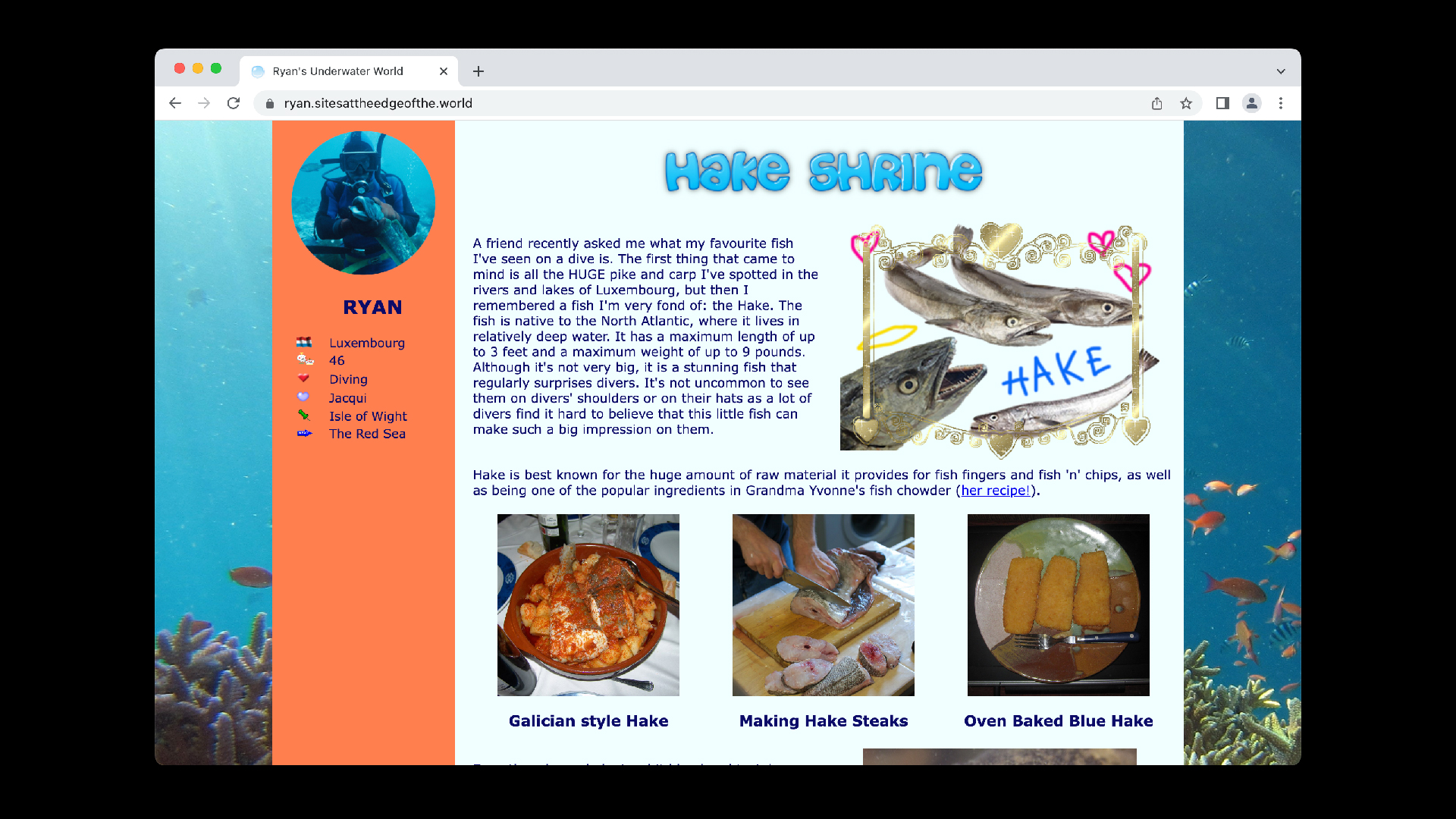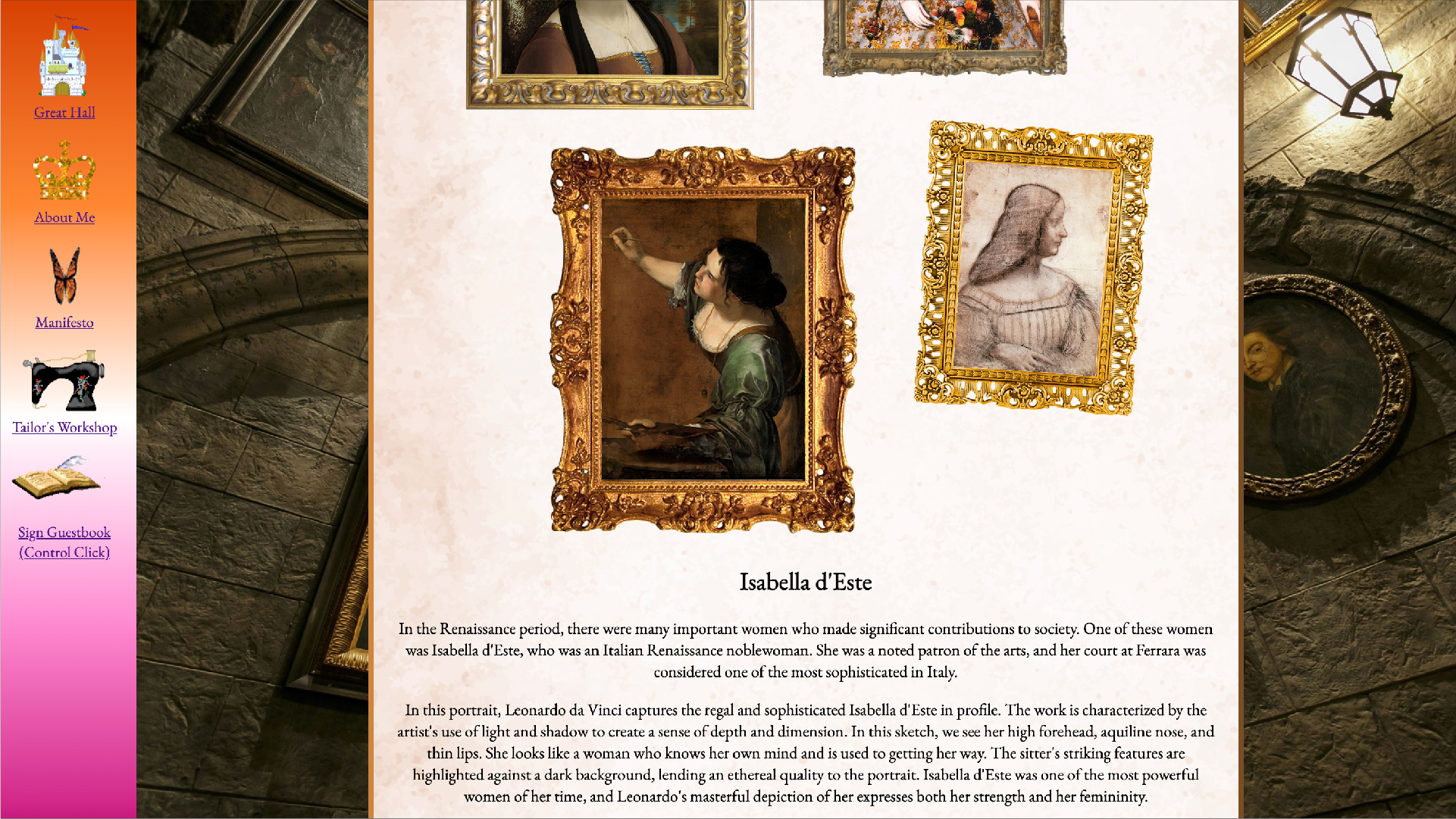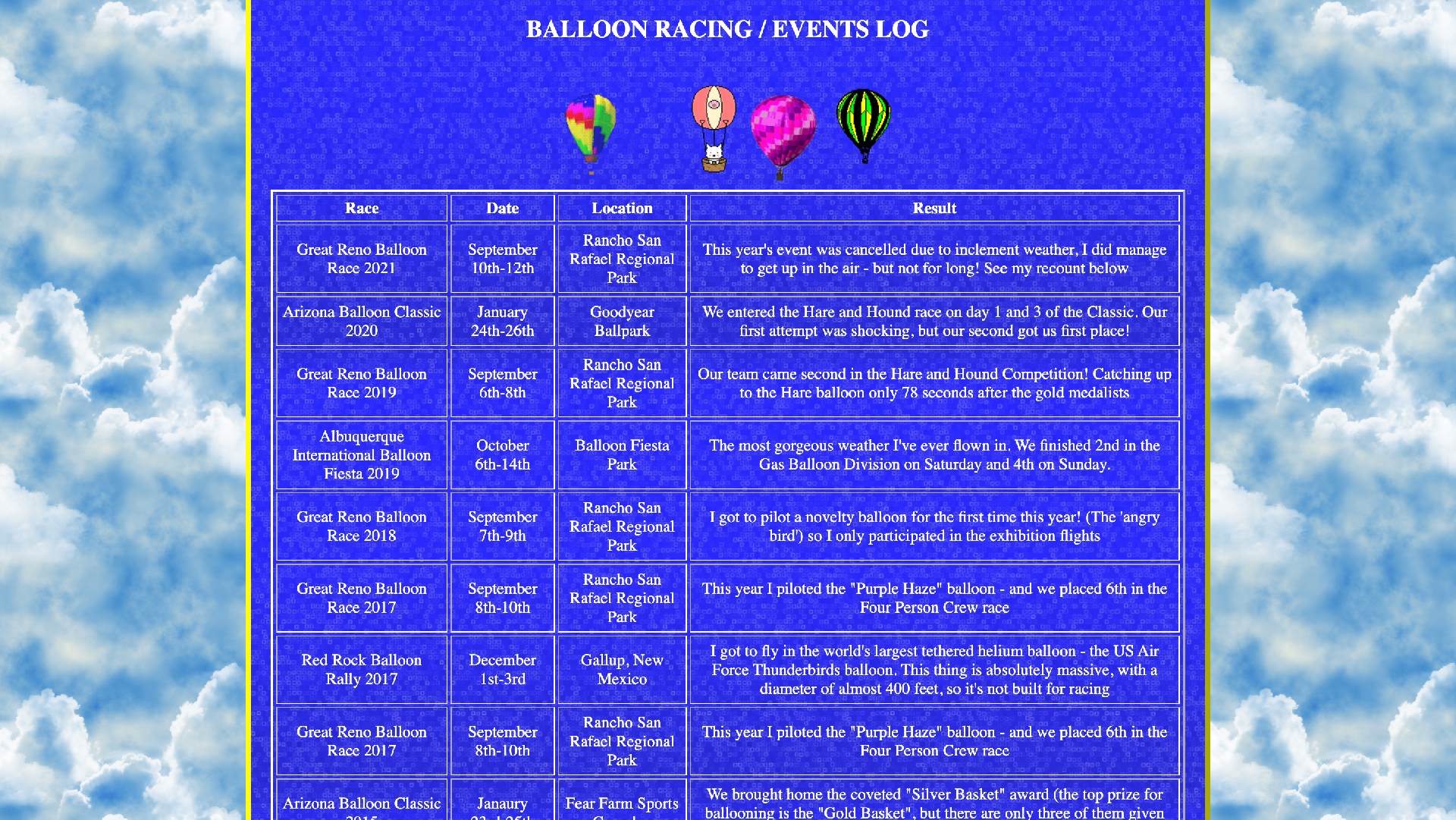







The web of the late 90s was a bright, garish cornucopia of flashing gifs and glittery word art. Users from all over the world were carving out personalised corners of the internet, hand-coding websites that were provisional and one-of-a-kind. Sites at the Edge of the World uses this gaudy visual language to challenge expectations about the way we construct identity online. An interactive investigation into storytelling, narrative, and world-building, the work is comprised of the personal websites of five Speculative Identities – ‘characters’ developed using generative code and machine learning algorithms. Users can trawl through pages of blogs, shrines, and 'about me' sections, following the entangled web from one persona to another or focusing in on the details of each site until the edges of their real-ness are revealed.
All text on the sites has been written by OpenAI's GPT-3 model and imagery was sourced from Openverse and the Internet Archives. In this sense the work forms a collage of our collective history of internet habitation and holds up a mirror to the beautiful and troubling ways we act online. Sites at the Edge of the World engages with a Speculative Design practice, not imagining a possible or preferable future but an alternative, almost now.
View the sites: https://sitesattheedgeofthe.world
All text on the sites has been written by OpenAI's GPT-3 model and imagery was sourced from Openverse and the Internet Archives. In this sense the work forms a collage of our collective history of internet habitation and holds up a mirror to the beautiful and troubling ways we act online. Sites at the Edge of the World engages with a Speculative Design practice, not imagining a possible or preferable future but an alternative, almost now.
View the sites: https://sitesattheedgeofthe.world